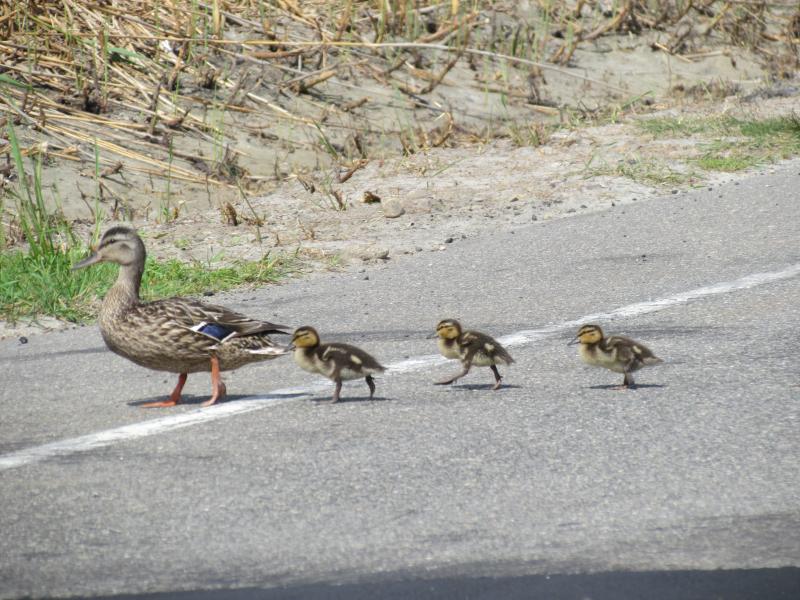For parents, this is the season of change. Kids graduate or move up to the next grade level; some have proms and dates that require elaborate plans. Regimented school day schedules are suddenly replaced with wide open, loosely planned summer days.
For birds here in Maine, this is also a drastic season of change. For them, it is taking on the responsibility of parenthood itself. Outside our kitchen window, a song sparrow is bringing in beakfuls of insects every few minutes for its chicks in a nest in the shrubbery on the corner of the house. The black-capped chickadee brood has already left the nest box on the back of the garage; we hear the young birds begging for food around the yard. On Father’s Day, while looking for a recently discovered and very rare (in Maine) king rail in Wells, we watched a brood of young common eiders bobbing in the ocean surf; moments, we saw a mother mallard leading her fuzzy chicks across the road into the salt marsh.
It seems like there are young birds everywhere, and it’s a good feeling to know that many birds are having a successful breeding season. It’s also interesting to consider the vast range of nesting strategies employed by various bird species.
The song sparrow, for example, is like many songbirds in that it has an open cup nest that is concealed in bushes, trees, or on the ground. Some songbirds that nest on the ground add a roof to the nest to provide some extra cover. The ovenbird (which is really a warbler) is named for this habit as early ornithologists likened its nest to a covered Dutch oven. Marsh wrens make globular nests with a side opening even though their nests are not on the ground but are usually up a few feet above the water in the thick cattails of the freshwater marshes they prefer.
Chickadees are an example of birds that nest in enclosed cavities. Other cavity nesting species include nuthatches, tree swallows, bluebirds, American kestrels, wood ducks, and woodpeckers. In fact, woodpeckers are essential for making cavities that many other birds can use. They are among the most well equipped excavators, pounding into the softer wood of dead and dying trees. Many cavity-nesting bird species have very white and unmarked or little-marked eggs, unlike most birds that nest in open areas, which tend to have some color and various markings on the eggs. Presumably this is because eggs in the open are less likely to be spotted by a nest predator if they have some camouflage, while those in a cavity can afford to be bright white since their coloration will not impact whether they are spotted by a predator.
While wood ducks are among those bird species that nest in cavities, along with a handful of other ducks like goldeneyes and buffleheads, the vast majority of waterfowl nest right on the ground. The female duck finds a spot hidden away in thick grass or under some bushes, makes a slight depression in the ground, and typically plucks some of her downy breast feathers to make a warm place for her eggs. Eiders are particularly known for plucking a large amount of down to make a large fluff of it under which the eggs can be hidden away when she has to leave the nest. Ducks and geese are also different from many birds in having large clutch sizes to make up for the high rates of predation they often suffer while the chicks are still flightless.
It’s the season of life for us and for the birds. See what birds are having success in your area!






























.png)
.png)
